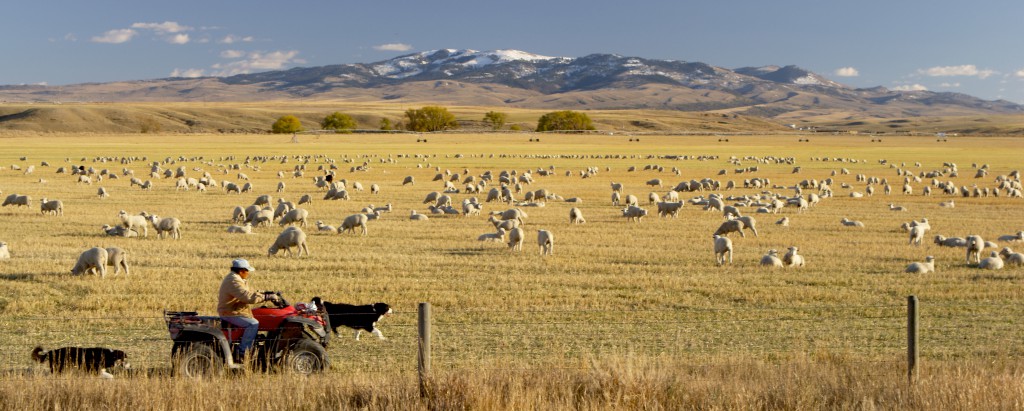Someday, this will be an infographic, and you’ll all say “Oh wow, this Bert guy is pretty amazing” (Maybe. Are infographics even a thing anymore, or is that too last year?). In the meantime, here you are, a riveting just-the-facts post about sheep in Montana:
When travelling around Montana, you will see cows. This is a practical inevitability. With an estimated 1.4 million beef cattle in Montana, seeing a cow in Montana is as likely as spotting a hipster in Portland. But will you see a sheep? If you do, you should count yourself lucky. Ok, maybe luck is too strong a word. My point is Montana only has about 210,000 sheep, which makes seeing a flock a lot less likely than encountering a herd of cows.

Montana’s sheep population hovers right around the 10th highest in the nation, behind California, Wyoming, and a slew of other states. But we used to be number one. In the first decade of the 1900s, Big Timber typically shipped more pounds of wool than anywhere else in the nation. In 1906, Terry alone shipped 1 million pounds of wool. Perhaps the most famous sheep rancher of the time, Charlie Bair, from Martinsdale, Montana, ran 300,000 sheep.
The sheep industry in Montana started in 1869 when Joseph Bishop headed to Oregon to buy a herd of horses. About three months later, he showed up in Bannack with 1,500 head of sheep and no horses. Two things stand out about that story. First, how do leave intending to buy horses and end up with sheep? Second, can you imagine herding sheep 800 miles across multiple rivers and over several mountain passes? Each night they had to build a corral out of wooden stakes and bolts of fabric just to keep the sheep from wandering off and getting lost.
Since then, sheep ranching steadily grew until it reached its peak around the time of Charlie Bair. It started to decline because Australia and New Zealand started shipping wool, and because Americans stopped eating sheep. In 2011, the average American ate more than 86 pounds of chicken, more than 65 pounds of beef and only 1.1 pounds of lamb. Lately, small sheep operations have increased. The local movement has increased demand for Montana-raised wool, artisan meats and cheeses, and lanolin—an oily substance found in sheep’s wool and used in soaps and lotions. In addition, sheep absolutely love to eat leafy spurge and spotted knapweed—two of Montana’s most notorious noxious weeds—and ranches and cities are now employing bands of sheep to help control these invasive species.
If you do see a band of sheep (you lucky, lucky person), you might notice a giant dog, llama, or donkey in the same field, pretending to be a sheep. Those are the three most popular guardian animals (like Guardians of the Galaxy, though slightly less epic) chosen, in part, for their possessive and cantankerous dispositions. Their job is to protect the flock. As you may know, sheep are dull, defenseless creatures that are afraid of just about everything (seriously, check out this video of a bunny chasing sheep. It’s kind of long, so you can just watch from around the 40 second mark to the minute mark). Apex predators, like wolves, bears, mountain lions, and eagles, can take out a sheep. But so can littler predators, like foxes, coyotes, and bobcats.
And that my friends, is most of what you will ever need to know about sheep in Montana.

